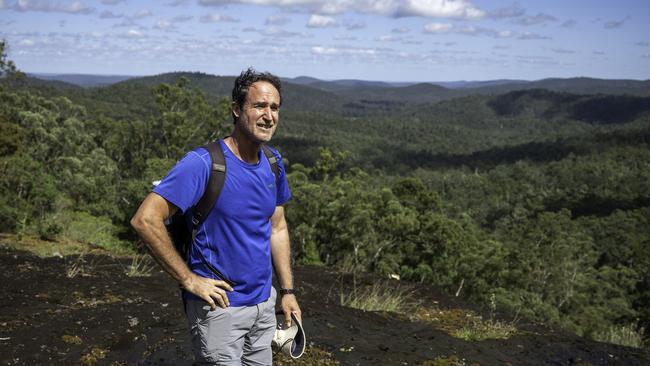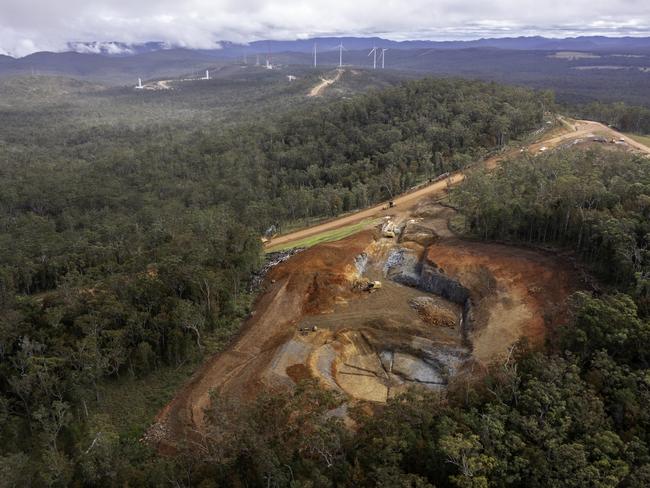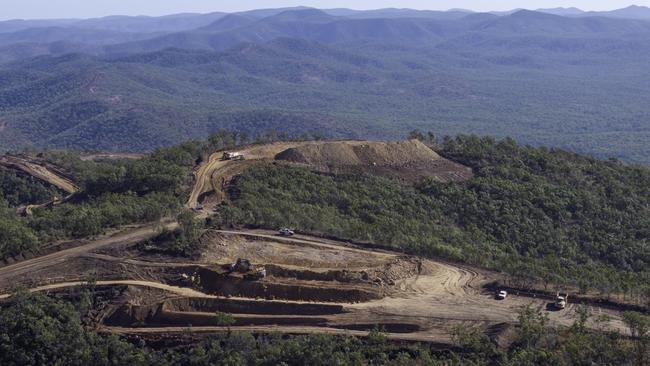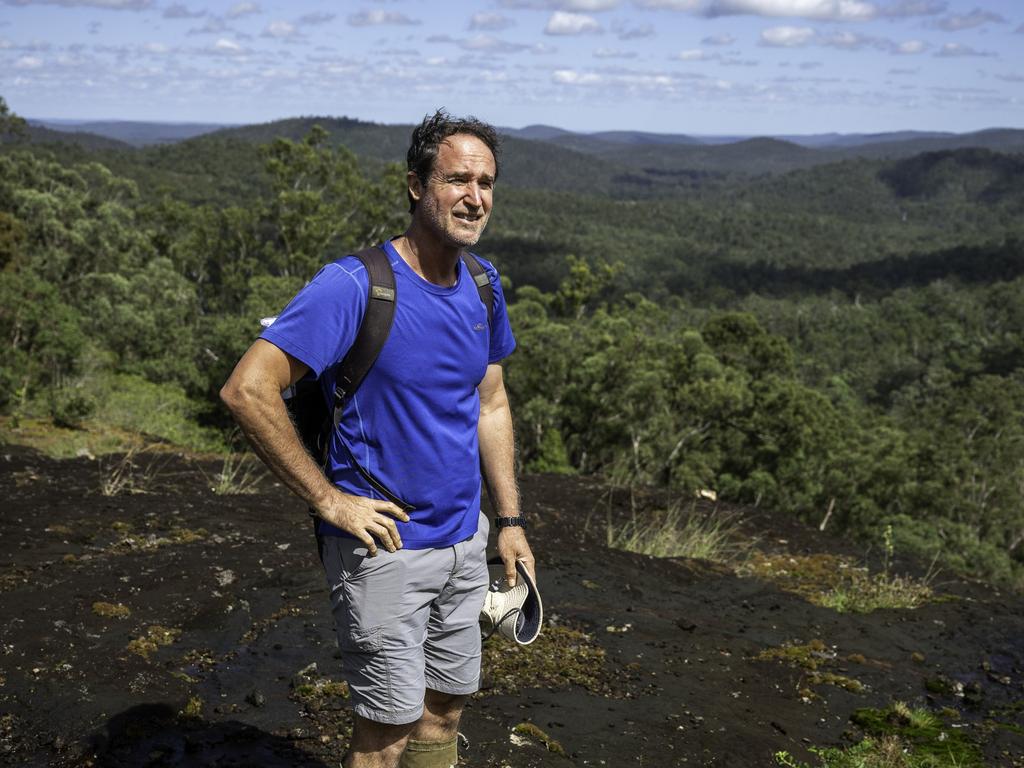‘Out of control’: scientists plead over wind and solar farm destruction
Ardent supporters of action on climate change are warning of another looming crisis: damage to sensitive ecosystems to make way for renewable energy. They say it’s time for a rethink.
Ecological experts are joining calls for a temporary halt to new large-scale renewables in crucial nature hotspots, amid growing concern over the destruction of the environment to make way for green energy projects.
Former Queensland government principal botanist Jeanette Kemp said there would be “considerable backlash’’ if the general public was fully aware of the extent of land clearing and fragmentation of valuable habitat to make way for some wind farms in Queensland.
“Because of the great speed at which renewable developments are going ahead we are paying a very high price in terms of the degradation of rugged, remote and ecologically important ranges,’’ she said.
Former Queensland chief scientist, Professor Hugh Possingham, agreed that some developments should be temporarily suspended while detailed regional biodiversity mapping is undertaken to show areas suitable for renewables development, and no-go zones which should never be considered.
Rather than hinder the rollout, this analysis would ultimately speed it up, he said, because developers would have more certainty and fewer planning roadblocks. Experts at the University of Melbourne plan to release detailed biodiversity analysis this year.
Communities in renewable energy zones in NSW and Victoria have long voiced concerns about quality agricultural land being used for the rush of large-scale solar, wind, battery and transmission projects but there is growing alarm at the damage to sensitive landscapes and areas close to national parks, world heritage areas, protected wetlands and migratory flight paths.
The Wet Tropics Management Authority has issued concerns about the cumulative scale of proposed developments that would involve clearing of relatively intact land near the world heritage area. The National Parks Association of NSW has fought the planned construction of high voltage power lines in Kosciuszko National Park as part of the Snowy 2.0 project.
‘Maybe with so many people on the more conservative side of politics and the left wing side of politics all saying this is out of control, we’ll get something done.’
Another group, Rainforest Reserves Australia, has warned that the most significant threat to remnant habitats along the Great Dividing Range - home to vulnerable species such as koalas and greater gliders — comes from poorly-placed renewable developments. “We have magnificent mountains that should not be fragmented and smashed for wind farms,’’ said co-founder Steve Nowakowski, a vocal opponent of some projects.

When built in the wrong locations, Possingham said solar farms posed a risk to native vegetation, wind turbines threatened birds and bats, and the roads, powerlines, turbines and new mines for critical minerals were increasing habitat loss, compounding existing pressures from climate change, land clearing and natural disasters.
Possingham, co-chief councillor at the Biodiversity Council and a professor of mathematics and ecology at the University of Queensland, said the rollout, while necessary, had proceeded without enough thought and planning
“Scientists have been talking to government about this for a long time, at least 10 years, because we could see what would happen — the footprint of renewables on the Australian continent and other parts of the world is substantial.
“We urged them repeatedly to plan, just plan. But for some reason governments refused to put in place the processes by which you could actually tell people where renewable energy infrastructure could be placed for a win win outcome, to generate energy and not cause loss of biodiversity.
“Maybe with so many people on the more conservative side of politics and the left wing side of politics all saying this is out of control, we’ll get something done.”
Like Kemp, Possingham is a supporter of renewable energy and the need to tackle climate change but they say it cannot be at the expense of the environment. It’s an approach echoed by former Greens leader Bob Brown who has warned that the impacts of some wind farms on critical habitat outweigh the benefits and could contribute to the extinction crisis.

Kemp said conservation groups, traditionally reluctant to acknowledge that not all renewable developments were green for fear of delaying climate change action, were becoming more vocal as bulldozers head into high quality tracts of native vegetation to cut roads and bases for wind turbine foundations.
“Maybe 150 hectares disappear here, 200 hectares disappear there. It’s small relative to land clearing in New South Wales and Queensland but you end up getting death by a thousand cuts,’’ Possingham said.
Concerns centre around north and central Queensland, which has a huge pipeline of projects, some of which involve clearing koala, greater glider and threatened bird habitat. Conservationists were heartened when the Wooroora Station wind farm proposal next to the Wet Tropics world heritage area was withdrawn earlier this year after the federal government indicated it would refuse it on environmental grounds. It was a rare case.
Many other projects have cleared planning hurdles with environmental controls and limits on how much habitat can be cleared. The Lotus Creek wind farm, now owned by the Queensland Government, was knocked back by the previous Federal coalition government but later approved by Environment Minister Tanya Plibersek despite potential significant impacts on the habitat of koalas, greater gliders and squatter pigeons.
Squadron Energy’s Clarke Creek wind farm 150km north-west of Rockhampton was approved on the basis that no more than 1513 ha of habitat suitable for koalas is cleared. It has pledged to “ensure no animal or threatened species is harmed as a result of project activity.”

The Gawara Baya Wind Farm, 65km southwest of Ingham, will involve the removal of 598 hectares of Sharman’s rock wallaby habitat, 614 hectares of koala habitat and 581 hectares of northern greater glider habitat.
Wind farm developers pledge to minimise clearing, conduct ongoing surveys and relocate wildlife where necessary. They employ ecologists and other experts and have detailed environmental management plans. However opponents say the cumulative impacts of a string of wind farms following transmission lines down the Great Dividing Range need to be assessed.
Kemp said environment groups should band together to demand a review of the locations of all Queensland renewable proposals occurring in remnant vegetation. “Whilst this is happening we need to halt the progress of all proposals which have not completed clearing,’’ she said.
“This is a huge state and we have many areas with already fragmented and cleared vegetation. This is where we should be building renewable developments. I’m not against most of the wind farms, it’s just those in really highly intact areas that must be reconsidered.’’
These comments come as a team at the University of Melbourne prepare to release analysis that will show zones where renewables could be rolled out on degraded and cleared land.
Brendan Wintle, director of the University of Melbourne Biodiversity Institute and a lead councillor at the Biodiversity Council, said areas further west had high energy generation potential and posed fewer problems.
“The general story is that the further west you go, the lower the impact on nature and high productivity agricultural land, and the lower the general conflict,’’ he said
Notwithstanding challenges around transmission infrastructure in more remote places, the analysis, to be released in about two months’ time, will show this to be a viable medium-term option, he said.
“I’m confident enough on our existing analysis that we can prove that it’s possible to meet full domestic demand, and also, potentially the energy export industry in a way that doesn’t impact on nature values and major agriculture, and that’s actually going to be faster and cause less community conflict.
“And basically the difference in cost is a rounding error, effectively, in the 5pc range.’’
Transmission giant Transgrid is also looking at future remote inland renewable energy zones as sources of additional renewable power in the mid-2030s.
Wintle said he did not support a temporary halt to approved developments but said a rethink was urgently needed. “We recognise that a rapid transition to renewable energy is absolutely critical but we need to carefully plan where to put it.
“The first order of thing is to not destroy native vegetation to build wind and solar farms, because that’s really counterproductive. We need more vegetation.’’
The scientific community is attempting to take the lead in the face of ongoing uncertainty from government: Labor’s long awaited overhaul of national environmental laws has been further delayed and the states are working on different plans to identify land planning issues around the new energy rollout.
Earlier this year the Victorian government announced plans for new guidelines to protect biodiversity and research into the threat of wind turbines to bird and bat species. NSW is looking to implement a new energy impact policy later this year. Queensland’s direction is unclear under the new Liberal National coalition government, which has pledged to repeal the state’s renewable energy target and dump a pumped hydro project.
Former energy infrastructure commissioner Andrew Dyer said in a major report late last year that land use planning was urgently needed. “Mapping of this information will assist with better identification of highly preferred locations for new projects, as well as provide confirmation regarding ‘no-go’ or inappropriate zones. Planning authorities, developers and other stakeholders should carefully review this information and associated maps before commencing any prospecting or development activity at a site,’’ his report said.
Lack of clarity over biodiversity risks has also frustrated the renewables industry. “A lack of policy direction to assess and mitigate risks to biodiversity has contributed to significant delays in project assessment, particularly for wind farms,’’ the Clean Energy Council said in response to Victoria’s planned guidelines.
“Wind farms do have some environmental impacts but these are well down the lists or threats to any species or ecosystem, when compared to… feral cat and fox predation and wetland degradation, among others.’’






To join the conversation, please log in. Don't have an account? Register
Join the conversation, you are commenting as Logout